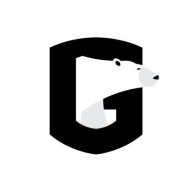

SonarQube Server and GuardRails compete in the code quality and security domain. SonarQube Server appears to have the upper hand due to its comprehensive feature set and extensive language support, while GuardRails strongly integrates security throughout the development lifecycle.
Features: SonarQube Server offers detailed code analysis, supports multiple programming languages, and is robust for diverse projects. GuardRails provides seamless integration with CI/CD workflows, has strong security scanning capabilities, and focuses on prioritizing security from the early development stages.
Ease of Deployment and Customer Service: SonarQube Server features a well-documented deployment process, suitable for on-premise setups, and benefits from extensive community support. GuardRails offers a cloud-based model that simplifies deployment with direct repository integration. It also provides more immediate customer support channels for enhanced service accessibility.
Pricing and ROI: SonarQube Server requires a higher initial setup cost but delivers solid ROI through deep analytical capabilities over time. GuardRails presents a flexible pricing model that balances costs with impressive security features, making it appealing for organizations looking to optimize long-term security expenditure.
| Product | Market Share (%) |
|---|---|
| SonarQube Server (formerly SonarQube) | 19.7% |
| GuardRails | 0.2% |
| Other | 80.1% |

| Company Size | Count |
|---|---|
| Small Business | 32 |
| Midsize Enterprise | 21 |
| Large Enterprise | 75 |
GuardRails offers an efficient way to enhance application security within development workflows by integrating seamlessly with tools developers already use, ensuring vulnerabilities are caught early in the development cycle.
GuardRails acts as an automated guard against security flaws within coding projects. By embedding itself into development environments, it identifies potential risks without disrupting workflow. Its flexibility allows integration with multiple platforms, providing comprehensive coverage. The agile configuration addresses specific security needs, fitting seamlessly into the fast-paced needs of modern software development teams.
What features make GuardRails valuable?GuardRails implementation varies across industries by focusing on domain-specific security challenges. In finance, it helps safeguard sensitive customer data through early vulnerability detection. In healthcare, GuardRails supports compliance with strict regulatory standards, protecting patient information while maintaining workflow efficiency.
SonarQube Server enhances code quality and security via static code analysis. It detects vulnerabilities, improves standards, and reduces technical debt, integrating into CI/CD pipelines.
SonarQube Server is a comprehensive tool for enhancing code quality and security. It offers static code analysis to identify vulnerabilities, improve coding standards, and reduce technical debt. By integrating into CI/CD pipelines, it provides automated checks for adherence to best practices. Organizations use it for code inspection, security testing, and compliance, ensuring development environments with better maintainability and fewer issues.
What are the key features of SonarQube Server?Many industries implement SonarQube Server to uphold coding standards, maintain security protocols, and streamline their software development lifecycle. In sectors like finance and healthcare, adhering to regulations and ensuring reliable software is critical, making SonarQube Server invaluable. It is often integrated into CI/CD pipelines, ensuring that code changes meet set standards before deployment. This approach enhances productivity and maintains compliance with industry-specific requirements.
We monitor all Static Application Security Testing (SAST) reviews to prevent fraudulent reviews and keep review quality high. We do not post reviews by company employees or direct competitors. We validate each review for authenticity via cross-reference with LinkedIn, and personal follow-up with the reviewer when necessary.